
Uncategorized
Site Visits
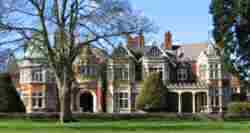
October 28, 2009
During the three-week period, we will follow in Churchill’s footsteps, visiting places of significance to him and institutions dedicated to educating new generations about his life and times. Participants will explore Cambridge University on their own during free time in the first two weeks, giving them an idea of British higher education. From Cambridge, pa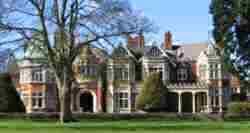 rticipants will tour Bletchley Park National Codes Centre in Buckinghamshire, the historic site of secret British code-breaking activities during World War II and the birthplace of the modern computer. The shared intelligence of the Second World War was a significant part of the foundation for today’s still vital Anglo-American relationship.
rticipants will tour Bletchley Park National Codes Centre in Buckinghamshire, the historic site of secret British code-breaking activities during World War II and the birthplace of the modern computer. The shared intelligence of the Second World War was a significant part of the foundation for today’s still vital Anglo-American relationship.
A visit to Blenheim Palace, Churchill’s birthplace and ancestral home, offers participants a glimpse of Churchill’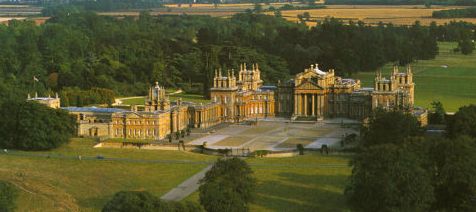 s aristocratic heritage and a view of an essential piece of his personal and political iconography. Here, he said, he “took two very important decisions: to be born and to marry”-neither of which he ever regretted. The palace was offered as a grant in the early 1700s by a grateful nation to John Churchill, son of the first Sir Winston Churchill (b. 1620). John Churchill, the First Duke of Marlborough, in his time also saved England, winning a great allied victory over the forces of King Louis XIV, saving Europe from French domination. In the 1930s, as the Nazis consolidated their power in Germany, Churchill wrote a multi-volume biography of John Churchill, carefully noting the First Duke’s principles of statecraft and strategy. As he conducted his research in the Palace’s archives and library and visited the battlefield near Blindheim (Blenheim) on the River Danube, Churchill’s regard for his famous ancestor grew and perhaps influenced his vision of himself. We also plan a brief visit to Churchill’s gravesite in Bladon Cemetery, adjacent to the Palace.
s aristocratic heritage and a view of an essential piece of his personal and political iconography. Here, he said, he “took two very important decisions: to be born and to marry”-neither of which he ever regretted. The palace was offered as a grant in the early 1700s by a grateful nation to John Churchill, son of the first Sir Winston Churchill (b. 1620). John Churchill, the First Duke of Marlborough, in his time also saved England, winning a great allied victory over the forces of King Louis XIV, saving Europe from French domination. In the 1930s, as the Nazis consolidated their power in Germany, Churchill wrote a multi-volume biography of John Churchill, carefully noting the First Duke’s principles of statecraft and strategy. As he conducted his research in the Palace’s archives and library and visited the battlefield near Blindheim (Blenheim) on the River Danube, Churchill’s regard for his famous ancestor grew and perhaps influenced his vision of himself. We also plan a brief visit to Churchill’s gravesite in Bladon Cemetery, adjacent to the Palace.
In London we will visit the Houses of Parliament in the Palace of Westminster, 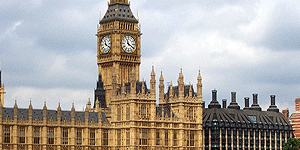 where Churchill’s grandson Nicholas Soames, MP, will arrange our tour. As Churchill declared in 1923, he was “in favor of government by talking,” as opposed to “government by terror or government by corruption-or government by bayonet, or government by superstition-or government by claptrap.” His advice to terrorists in our time might be similar to the advice he successfully gave to Sinn Fein in the 1920s: “Quit murdering, and start arguing.”
where Churchill’s grandson Nicholas Soames, MP, will arrange our tour. As Churchill declared in 1923, he was “in favor of government by talking,” as opposed to “government by terror or government by corruption-or government by bayonet, or government by superstition-or government by claptrap.” His advice to terrorists in our time might be similar to the advice he successfully gave to Sinn Fein in the 1920s: “Quit murdering, and start arguing.”
Another visit will be to Harrow School, the public school (equivalent to a private Americ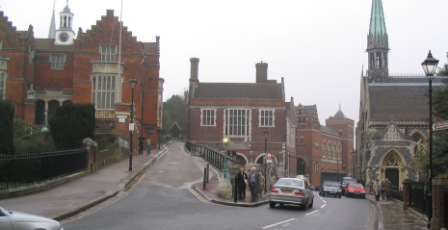 an high school) that Churchill attended for fourteen terms from age thirteen to a few days past his eighteenth birthday, from 1888 to 1892. Here he heard memorable lectures, won the English public schools fencing championship, gained a declamation prize for reciting 1200 lines of Macaulay’s “Lays of Ancient Rome,” learned to love the school songs, wrote anonymous letters to editors of The Harrovian, and joined the Army Class in preparation for admission to the Royal Military Academy at Sandhurst. The school is located in the small town of Harrow-on-the-Hill and, as its name portends, a visit necessitates a significant uphill walk from the train station.
an high school) that Churchill attended for fourteen terms from age thirteen to a few days past his eighteenth birthday, from 1888 to 1892. Here he heard memorable lectures, won the English public schools fencing championship, gained a declamation prize for reciting 1200 lines of Macaulay’s “Lays of Ancient Rome,” learned to love the school songs, wrote anonymous letters to editors of The Harrovian, and joined the Army Class in preparation for admission to the Royal Military Academy at Sandhurst. The school is located in the small town of Harrow-on-the-Hill and, as its name portends, a visit necessitates a significant uphill walk from the train station.

2024 International Churchill Conference
Next we will visit the most evocative Churchill site of all, Chartwell, in 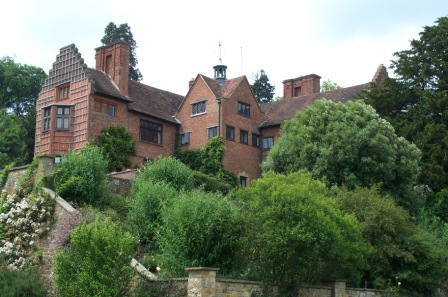 Westerham, Kent, Churchill’s country home from 1922 until his death in 1965, which now belongs to the National Trust. Chartwell became, according to historian David Stafford, “a virtual private intelligence centre” when Churchill was out of government in the 1930s. The house has been restored to its condition during the 1930s and is furnished with thousands of items belonging to Churchill and his family, including some 300 canvases that Churchill painted in the years after his disappointment at the Dardanelles in 1915.
Westerham, Kent, Churchill’s country home from 1922 until his death in 1965, which now belongs to the National Trust. Chartwell became, according to historian David Stafford, “a virtual private intelligence centre” when Churchill was out of government in the 1930s. The house has been restored to its condition during the 1930s and is furnished with thousands of items belonging to Churchill and his family, including some 300 canvases that Churchill painted in the years after his disappointment at the Dardanelles in 1915.
Finally, we visit the Churchill Museum and Cabinet War Rooms, the only national museum dedicated to Sir Winston Churchill (http://cwr.iwm.org.uk/).  Opened in 2005, the Museum is a permanent exhibition housed within the Cabinet War Rooms, the underground complex where Churchill and his government met during the war. Because of The Churchill Centre’s new partnership with the Museum, Mr. Phil Reed, Director of the Museum invited teachers to sit in the actual underground room where the War Cabinet met to hear about how the work of the government proceeded in wartime. Museum-goers see this historically significant space through a glass window.
Opened in 2005, the Museum is a permanent exhibition housed within the Cabinet War Rooms, the underground complex where Churchill and his government met during the war. Because of The Churchill Centre’s new partnership with the Museum, Mr. Phil Reed, Director of the Museum invited teachers to sit in the actual underground room where the War Cabinet met to hear about how the work of the government proceeded in wartime. Museum-goers see this historically significant space through a glass window.
During these visits, special instructional sessions by Institute faculty and on-site staff members will deepen participants’ appreciation.
Subscribe
WANT MORE?
Get the Churchill Bulletin delivered to your inbox once a month.


